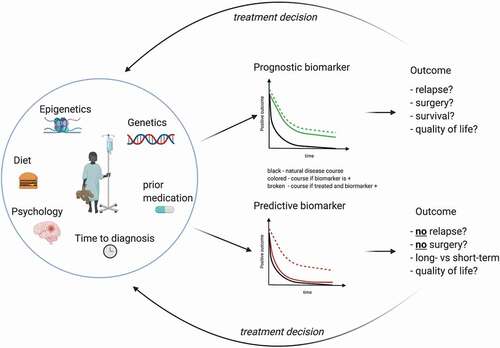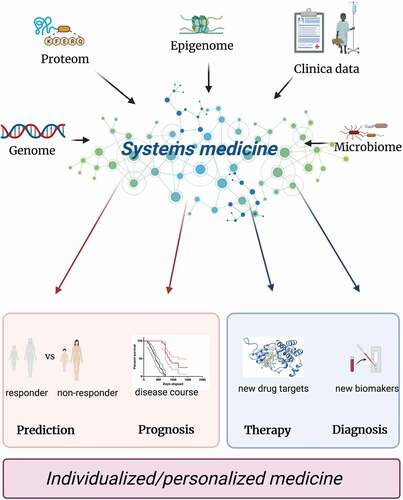Figures & data
Figure 1. Difference between prognostic and predictive biomarkers.
In the past several parameters have been proposed as potential predictors of the long-term outcome and of the response to therapy in CED – in many cases these terms were used interchangeably even though prognostic and predictive biomarkers focus on two different aspects entirely. Whereas a prognostic biomarker is a marker that provides information on the likely course of the disease in an untreated individual, predictive biomarkers are defined as markers that can be used to identify subpopulations of patients who are most likely to respond to a given therapy.

Figure 2. Systems medicine approach.
Based on recent technological developments it is nowadays possible to integrate high-throughput omics (including genome and epigenome, transcriptome, proteome, metabolome, and microbiota to cite the most important aspects) with clinical datasets. Analysis of these multi-layered sets of information might open new perspective creating a circular and iterative process between clinical setting and computational pathogenetic models, allowing to develop new models for diseases prognosis and prediction of response to therapies.

Table 1. Risk factors for a more complicated disease course in Crohn’s disease and ulcerative colitis

